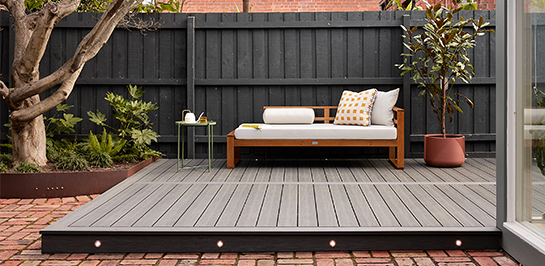Alternative Outdoor Decking and Flooring Options
Designing your outdoor living area is a massive job, whether you’re renovating, or starting from scratch, and it requires proper planning and forethought. When deciding on what you are going to use to finish your outdoor floor space, there are a few major factors to consider.
Some of the biggest factors when choosing what material to go with include:
- What the deck or space is going to look like and be used for?
- A timber or timber-like deck will have a completely different finished look than a painted concrete outdoor area and will also wear and age differently over time.
- How much the project is going to cost also plays a huge part in the decision-making process and ongoing costs are a factor that should be taken into consideration to ensure you are making the right decision for your space and lifestyle.
Keep on reading to compare the pros and cons of the 6 most common types of outdoor flooring options, so you can choose the most appropriate for your space.
Hardwood Timber:
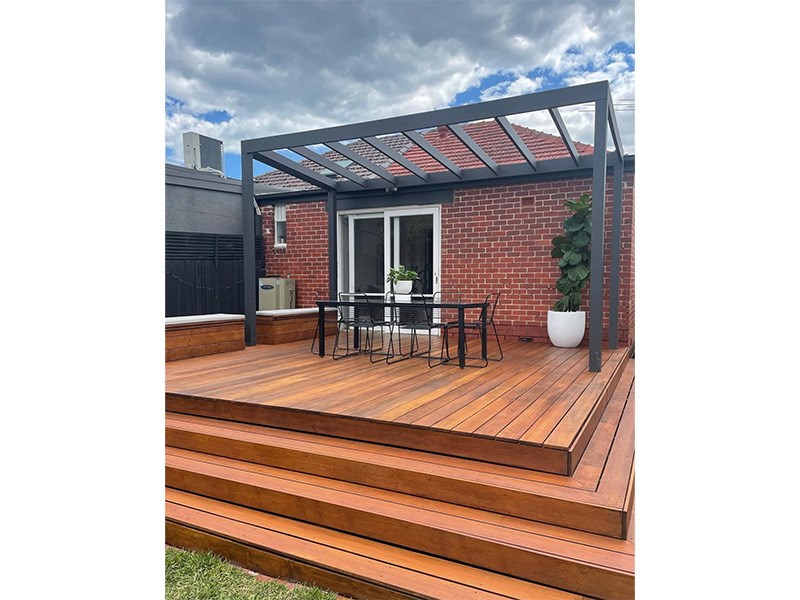
PROS: Hardwood timbers such as Merbau, Jarrah and Spotted Gum are an Australia decking staple. The main draw of a traditional timber deck is the classic and warm look it brings to any space. When someone says the work “decking,” the image of a rich, timber finish immediately comes to mind.
Pricing for timber decking materials can vary depending on the type and quality of the timber used, but the upfront material costs tend to be lower than some of the equivalent materials, such as composite decking, tiles, or pavers.
There are multiple options for customising a timber deck. You can seal it with a clear oil or change the colour a bit more drastically with a stain. You can also add a slip-resistant coating for flooring around pools or other wet areas.
CONS: One of the main pitfalls of using timber for your decking is the maintenance required. It is recommended that to keep your timber deck in tip top shape, a thorough clean every few months is advised, as well as annual recoating, staining or sealing. This can add up to a significant cost long-term, in both time and money.
While you can build a timber deck yourself, it is recommended that you get a professional to complete it, to ensure the build quality is up to scratch. This can incur a significant cost, which is on-top of the cost of materials.
If not properly and regularly maintained, timber decks can be susceptible to mould, mildew, and rot, as well as splintering and cracking. Cupping, twisting, and fading due to extended UV exposure is almost guaranteed with a hardwood deck, regardless of how well it has been maintained – it will never look as good as the day it was laid.
Composite Decking:

PROS: With the latest composite decking on the market there is now a wide range of colours and finishes, you can get the look and feel of a traditional timber deck or opt for a modern grey or coastal colour to suit your space.
Composites are made using a mixture of timber and plastic – often containing a high percentage (80-90%+) of recycled materials, which is a great use of waste plastic and doesn’t contribute to deforestation – which is great for the environment.
Composite decks have an extremely low level of maintenance required, a general clean using warm soapy water (as needed) is the extent in most cases. No extensive sanding or re-sealing needed, which saves you a considerable chunk of money long-term, especially compared to the cost of maintaining a traditional timber deck.
Additionally, the installation of a composite deck is a lot more DIY friendly than many traditional outdoor flooring options, which is another area you can save some money. Composites will also save you time when laying the deck, as they have easy to use installation clip systems that are made to be user-friendly and efficient.
Some composite decking boards also carry a BAL rating for use in bushfire prone areas, which is worth considering if it is applicable to your property.
CONS: As composites contain a large percentage of plastic in them, they are susceptible to heat absorption and can get warm underfoot, especially if in a darker colour in a full-sun location.
Shopping around and looking at different composite options to find the right one for you is important, as the look and quality of composite decking can vary quite a lot! Some composites can look ‘plasticky’ or ‘fake.’
If you change your mind further down the track, and decide you want a different coloured deck, composites do not allow for painting or staining.
PVC and Plastic:

PROS: Fully PVC or plastic outdoor flooring options are extremely low maintenance, as well as particularly good at resisting scratches, mildew, and stains.
Unlike other materials, plastic PVC is a light decking material, making it easier to transport and handle during installation. PVC plastic decking materials tend to come with long warranties due to their durability.
CONS: PVC decking is made using virgin plastics, there is a significant environmental impact. The look of plastic decking also does not look great, as it looks like plastic (because it is plastic!)
The maximum span between joists is usually very limited, as the structural integrity of plastics alone is not as great as most other decking materials.
Concrete:
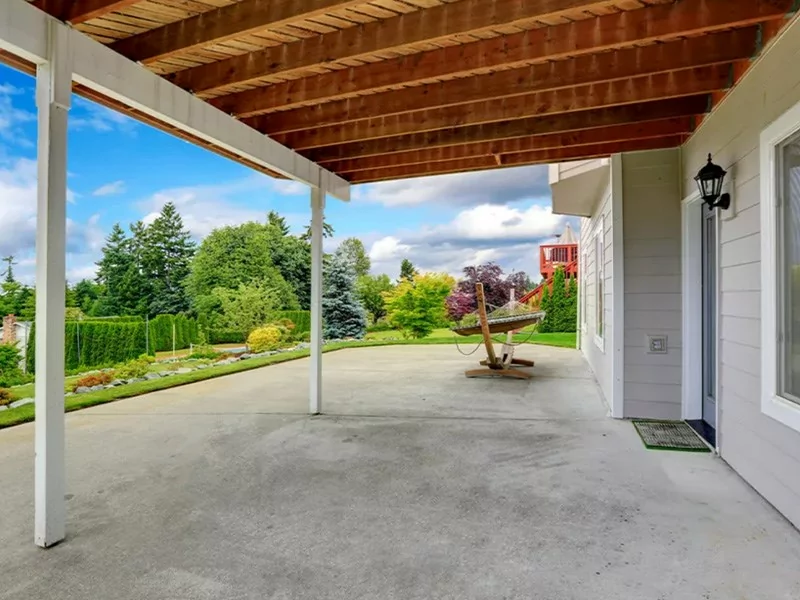
PROS: Concrete has long been used for outdoor flooring because of its durability and hardiness, as well as how easy it is to clean. You also have an assortment of different customisation options with concrete paint. The up-front material cost is quite low comparatively to other materials.
CONS: While you can paint concrete to a variety of assorted colours and designs, the cost of that paint can be extremely high, and it does not always last a long time. If not painted or sealed, bare concrete is not very aesthetically pleasing, so it may take away from the rest of your outdoor living space and can be susceptible to staining.
Pavers & Tiles:
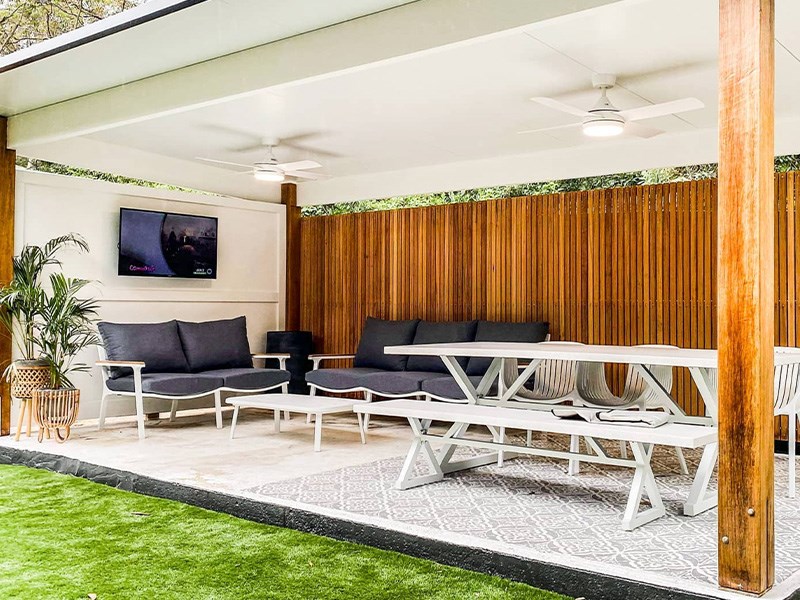
PROS: Laying pavers or tiles is a fantastic way to add some colour and style in your outdoor living space, without the hassle of having to paint or stain anything. Most tiles and pavers are easy to clean (depending on the material used), and if they are non-porous, extremely stain resistant.
They’re available in a variety of sizes, shapes, colours, and patterns, allowing for you to put your own flair on your outdoor living area.
CONS: When wet, tiles can be extremely slippery, and there can be some durability issues compared to other outdoor flooring options, and depending on the quality of your chosen tiles, the price-tag can be significant in some cases.
Tiles are very hard and can cause injuries if people slip, trip or fall over when on tiles (pets included!)
Fake Grass:
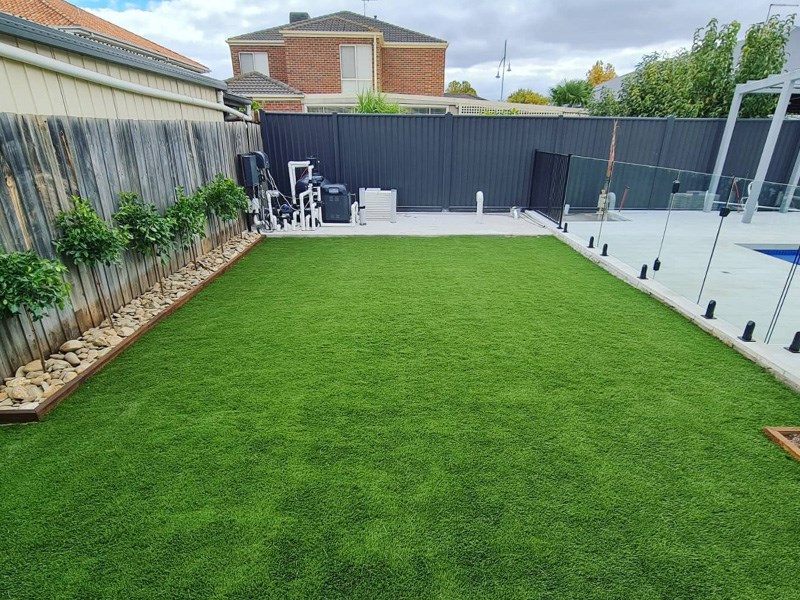
PROS: Laying fake grass can be a low-maintenance option compared to real grass! It is great for kids and pets, as it is comfortable and soft. No more dirt patches!
CONS: The material cost per square metre is high compared to a lot of other outdoor flooring alternatives. There is also the possibility of mould and mildew to grow if laid on a surface without proper drainage.
As it is 100% plastic, it can also get extremely hot when in direct sunlight.
So, there you have it – the pros and cons of the 6 most common types of outdoor flooring options – giving you all the information you need to make the right decision for your outdoor space.
If you have any queries or questions – don’t hesitate to reach out or request a sample.
We’re always happy to help!
You may also like

Get started with Ekodeck
Experience our entire colour range for yourself. We deliver a sample kit complete with each colour direct to your door.
